Graphics Reference
In-Depth Information
Theorem 3.4.2 is nice because arguments therefore do not have to contain special
cases to deal with nonintersecting lines.
3.4.1
Analytic Properties of the Projective Plane
This section describes some analytic properties of
P
2
.
3.4.1.1. Theorem.
Three distinct points [X
1
,Y
1
,Z
1
], [X
2
,Y
2
,Z
2
], and [X
3
,Y
3
,Z
3
] of
P
2
are collinear if and only if
XYZ
XYZ
XYZ
1
1
1
=
0
.
(3.17)
2
2
2
3
3
3
Proof.
We basically have to find numbers a, b, and c, not all zero, so that
aX
++=
bY
cZ
0
,
i
=
1 2 3
, , .
i
i
i
The theorem is now an easy consequence of basic facts about when such systems of
equations admit nontrivial solutions.
The line in
P
2
3.4.1.2. Corollary.
determined by two distinct points [X
1
,Y
1
,Z
1
] and
[X
2
,Y
2
,Z
2
] has equation
YZ
YZ
X
ZX
ZX
Y
XY
XY
Z
1
1
1
1
1
1
+
+
=
0
.
(3.18)
2
2
2
2
2
2
Proof.
Simply apply Theorem 3.4.1.1 to points [X,Y,Z], [X
1
,Y
1
,Z
1
], and [X
2
,Y
2
,Z
2
]
and expand the determinant in the theorem by minors using the top row of the matrix.
If the lines
L
i
in
P
2
defined by equations
3.4.1.3. Theorem.
aX bY cZ
++= =
0
,
i
1 2
, ,
i
i
i
are distinct, then they intersect in the point [(a
1
,b
1
,c
1
) ¥ (a
2
,b
2
,c
2
)].
Proof.
This follows from the fact that the cross product of two vectors is
orthogonal to both of the vectors.
Let
L
be the line in
P
2
3.4.1.4. Theorem.
determined by two distinct points
P
1
= [
p
1
] and
P
2
= [
p
2
],
p
i
Œ
R
3
.
(1) Every point of
L
can be written in the form
P
= [s
p
1
+ t
p
2
] for some real
numbers s and t that are not both zero. Furthermore,
P
1
,
P
2
, and
P
are distinct points
if st π 0. If
P
= [s¢
p
1
+ t¢
p
2
], then (s¢,t¢) = c(s,t), for some nonzero constant c.


